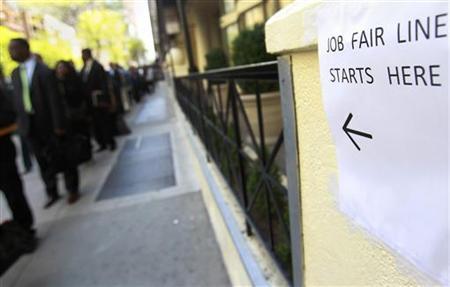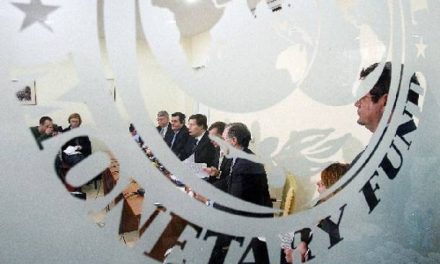“We’re been creating close to 200,000 jobs a month now for more than seven years. That’s just an incredible achievement. And that machine is still humming,” said Mark Zandi, chief economist at Moody’s Analytics.
U.S. stock markets opened slightly higher Friday. The Dow Jones industrial average rose 0.27 percent, after retreating from near-record highs on Monday.
In June, the largest job gains were seen in the health-care sector, which added 37,000 jobs as an aging U.S. population continued to drive the industry. The ranks of day-care providers, financial analysts and miners also swelled in the month.
The only disappointment in June was workers’ wages, which remained subdued despite continued job gains. Average hourly earnings were up by 2.5 percent from a year ago to $26.25, continuing a streak of relatively weak wage growth. This may seem somewhat contradictory, since employers have been trading anecdotes of the trouble they have finding qualified employees, said Cathy Barrera, chief economic adviser for ZipRecruiter, a jobs site.
“There’s a lot of anecdotes about job shortages, in certain geographic areas or for certain types of skills,” Barrera said. “That’s another mystery, as to why exactly the wage growth isn’t accelerating, if we’re seeing these sorts of gaps or shortages.”
Barrera said the reason could be America’s large pool of younger workers, who have struggled to gain much job experience through the recession. Employers may be recruiting less experienced workers and training them in-house, rather than offering pay increases.
For other economists, though, the lack of wage growth is a sign that the economy still has room to run before most people who want a job are able to get one.
“If employers indeed really needed those workers and they couldn’t find them, then they would take all the steps they could take to get them,” said Elise Gould, a senior economist at the Economic Policy Institute. “And the first, very clearly, is to increase wages.”
As the economy continues to heat up, workers who have more trouble finding jobs because of lower education, prison records or racial discrimination will have an easier time. Gould points to an encouraging sign in the recent drop in the African American unemployment rate, to 7.1 percent in June from 8.8 percent a year ago. Though the rate is still much higher than for whites, it has fallen three times as quickly as the overall unemployment rate has during the last year.
Eight years into the current economic expansion, the average pace of job gains remains strong. However, it is still slower than what would be required to meet Trump’s ambitious promise of creating 25 million jobs in the next decade.
On Monday, Trump took to Twitter to celebrate gains made in the economy. “Really great numbers on jobs & the economy!” he tweeted. “Things are starting to kick in now, and we have just begun!”
Trump’s election fueled hopes of tax cuts, infrastructure spending and other policies that would support business. But while the administration has moved quickly to dismantle regulations, legislative efforts that would alter taxes and spending have proved far more difficult, as divisions among congressional Republicans have bogged down health-care reform.
In a statement released Friday morning, Rep. Kevin Brady (R-Tex.) celebrated the jobs gains and the growth in the labor force, but said House Republicans had a lot more work to do on tax reform. “Working with President Trump and the Senate, we will deliver bold reforms this year that spur job creation, allow workers to keep more of their hard-earned paychecks, and improve the lives of all Americans for generations to come,” he said.
Many business leaders are still hoping for tax reform before the end of the year, but they privately say the window is closing.
Yet even as hopes for a “Trump bump” recede, growth continues to chug along at a steady if unimpressive rate.
“We’re doing fine. It’s just not as much as many people would like, but it’s a very healthy 2 percent,” Blu Putnam, chief economist at CME Group, said of rates of economic growth.
While the current economic expansion is already the third longest in history, an aging population and a relative lack of technological innovation mean that rates of growth have been slower than past boom times.
Still, the Federal Reserve has judged that it is time to begin to raise interest rates to more normal levels, after holding them low to stimulate the economy after the recession. On June 14, the Federal Reserve raised its benchmark interest rate by a quarter point, from 1 percent to 1.25 percent, the third such increase in six months. The Fed projects one more interest rate increase this year and three more each in 2018 and 2019. Investors are now forecasting that the Fed will introduce measures to begin paring back its massive balance sheet at its September meeting and delay its next rate increase until its meeting in December.
Economists said the June jobs report was unlikely to influence the Fed’s calculus. The relatively slow wage growth in June could even help to reassure the Fed that inflation pressures aren’t getting too intense, said Kevin Logan, U.S. chief economist at HSBC.
“From the Fed’s point of view, now that the unemployment rate is low, we should gradually raise rates to guard against an eventual pickup in inflation, but it’s nothing to be especially concerned or worried about,” Logan said.
The strong economy continued to coax Americans off the sidelines and into the labor force in June, the data showed. The U-6 rate — a broader measure of unemployment that includes workers who have given up looking for work due to a tough job market and those who are part time but would like to be full-time — ticked up to 8.6 percent in June from 8.4 percent in May, but that was due to more people who had left the labor force coming back to look for jobs.
Jed Kolko, chief economist at jobs site Indeed, said that other measures of participation in the economy, like the labor force participation rate and employment-to-population rate for prime age workers, both rebounded in June. “Both of those numbers suffered in May, which raised concerns that the recovery was stalling,” he said. “The improvement in June makes it more likely that those declines in May were a blip.”



















